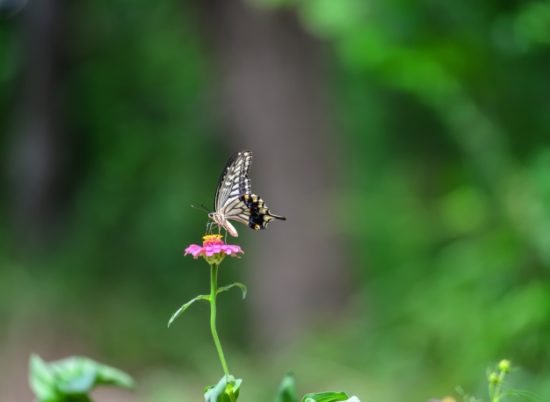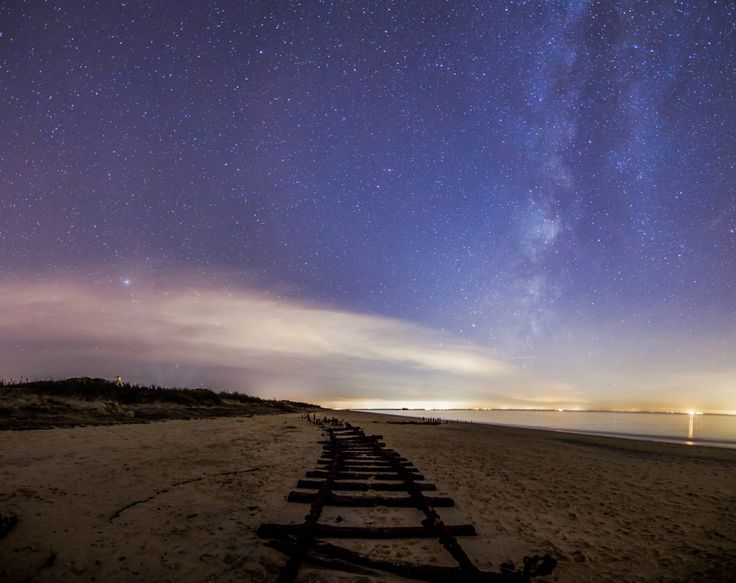
Because of innovations in technology, the near-instant availability of vast stores of knowledge and a random web of expanding connections, we’re in a period of rapid social change today.
With rapid change comes an opportunity to re-think, well, almost everything we believe has been etched in stone. It’s a chance to return to fundamentals, to the underlying value-propositions that drive our most basic decision making.
– Does society have to be organized this way?
– Does every channel of government have to aim at maximizing some peoples’ wealth?
– Is our society’s aim of producing more stuff at cheaper prices (and the instant gratification that it brings to us as consumers) more valuable than having better jobs and additional leisure time?
– Should the price of human consumption today be the destruction of the natural world?
We might be able to allocate our social resources differently if we got back to basics. We might make different trade-offs. Periods (like this) of rapid change come with the realization that “It doesn’t have to be this way.”
At times like this, there are opportunities to harness key drivers of change so that when you come out the other end, the world is better off. For this, it helps to have a vision of the future that you want to live in. In prior newsletters, John Seely Brown and Jed Purdy were “thinking out loud” about their visions for that better future and, as a practical matter, how we can get there. Deeply humane ideas like theirs can help us to maximize the advantages of change in the “good work” that we’re trying to do, both in our paying jobs and outside of them.
This week the news story is about how to learn productive lessons from times of rapid social change in the past. Over the last few years, some forward thinkers in the UK have been creating educational materials for anyone who is interested in seizing the opportunities of a world in flux to produce a better tomorrow. Theirs are ideas for the classroom, the workplace, the community—wherever imagination has real problems to solve in a “white water world.”
History Gives Us Hope
One reason to believe that tangible, positive change is possible today is because it’s been possible during similar times in the past.
A group of scholars who are clustered around the University of Sussex have been presenting some of those history lessons along with their arguments for “seizing the days” that we’re in. The image that they use in their educational materials is the butterfly because it represents a point in the arc of change between chrysalis and taking flight. As teachers, they’re saying something about the potential of these times, but they’re also referring to us as individuals and the opportunities we have to “take wing” instead of drifting in complacency or thinking that whatever we do won’t matter.
The Sussex scholars know that their first task as teachers is to get their students to engage. As such they remind us that during other times of rapid social change, people just like us achieved real progress. Because history shows that humanity can learn to do things differently, adapting on the fly, we can do the same while bringing others along.
The Sussex scholars also have the real (as opposed to theoretical) world clearly in view. Their aim is to engage us in what they call “living exercises” to tackle The Problem as they see it today.
We are currently locked in to a high-carbon global economy by multiple factors. They include energy-intensive infrastructure, high-consumption culture, unequal distribution of political power within and between states, and an economic system dominated by finance that fails the poorest, takes infinite growth for granted, and resists reform, however broken it becomes.
This is the challenge they designed their teaching for, but the approach they take would likely succeed if you defined The Problem that we face today differently. That’s because:
‘It is easier to imagine the end of the world than a change to the current economic system.’ And yet, as it also says in Proverbs (29:18) ‘Where there is no vision, the people perish.’ Visualising what can be done, inclusively and progressively, to bring about a sustainable society is therefore our challenge …Only in this way might we overcome the ironic maxim of medieval historian Vasily Klyuchevsky, that: “History teaches us nothing but just punishes us for not learning its lessons.’
History Provides Working Models

The following historical examples are cited in a booklet the Sussex scholars compiled in 2016 and you can download here.
The examples that they discuss all involve (1) responses to a radical change in circumstances that would/could not have been possible in a less disruptive time, (2) rapid adaptation by the public, and (3) longer-term improvements thereafter, some expected and some surprising. Despite the length of the following quotes, I thought these authors needed to teach their history lessons in their own words.
IN THE WAKE OF RECENT ECONOMIC RECESSIONS, WORK WEEK & OTHER JOB-RELATED CHANGES
“Responding to a recession in the early 1990s, the public sector in the Netherlands began offering a four-day week to staff to save money. Since then it has spread and become common employment practice, with the option offered to workers in all sectors of the economy. As a result, job-sharing has become the norm in the health and education sectors. It is common to have part-time surgeons, engineers and bankers making the much hyped work-life balance in modern industrial economies a practical reality. One in three men either work part time or compress their hours, working five days in four to enjoy a three- day weekend. Three quarters of women work part time. The popularity of the different pattern is such that 96 percent of part time workers do not want to work longer hours.
“It’s not just liberal Northern Europe that’s seen the benefits of shorter working weeks. In the United States, in the midst of the financial crisis in 2008 – faced with recession, rapidly rising energy prices, growing lines at food banks, rising unemployment and mortgage foreclosures – instead of simply bringing a knife to public spending and pushing austerity measures, Jon Hunstman, Utah’s Republican Governor, surprised people with an experiment to save money. At only a month’s notice, 18,000 of the state’s 25,000 workforce were put on a four-day week and around 900 public buildings closed on Fridays. The impact of the scheme was studied. Eight out of ten employees liked it and wanted it to continue. Nearly two thirds said it made them more productive, and many said it reduced conflict both at home and at work. Workplaces across the state reported higher staff morale and lower absenteeism. There were other surprises. One in three among the public thought the new arrangements actually improved access to services. It wasn’t the main objective, but at a stroke the four-day week also reduced carbon emissions by 14 percent, a huge annual, climate-friendly saving.”
INSTEAD OF PRESERVING ITS BANKS, A COUNTRY RE-INVENTS ITSELF
“Iceland was at the heart of financial crisis in late 2008 and nearly destroyed by it. It built its economy around speculative finance but, after the meltdown, a ‘pots and pans’ revolution led to a process to draft a new citizen-drafted constitution, engaging half the electorate. Rather than making the public pay for the crisis, as the Nobel economist Paul Krugman points out, the country, ‘let the banks go bust and actually expanded its social safety net’ and instead of placating financial markets, ‘imposed temporary controls on the movement of capital to give itself room to manoeuvre.’The constitutional exercise proposed a new approach to the ownership of natural resources for public good. Iceland now gets all its electricity and heat from renewable sources.
“The crowd-sourced constitution ultimately fell foul of legal technicalities and the Supreme Court, but that didn’t stop the new mood creating lasting conditions for change and the desire for new economic approaches. Where other countries largely let banks off the hook, in 2015 Iceland’s Supreme Court upheld convictions against bankers at the heart of the crisis. Finance is now so sensitive that when the Prime Minister was caught up in revelations from the release of the so-called Panama Papers, he was forced from office.”
WE COULD ALSO HAVE INVESTED IN A DIFFERENT FUTURE DURING THE GREAT RECESSION
“The notion that you can’t ‘buck the markets’ was turned on its head by the 2007–2008 crisis when financial markets realised they couldn’t survive without a massive public bailout and long-term support…The novelist and observer of modern banking, John Lanchester, made this observation in his book about the financial crisis, Whoops!: ‘The amount of state intervention (in the banking system) in the US and UK at this moment is at a level comparable to that of wartime. We have in effect had to declare war to get us out of the hole created by our economic system.’
“Lanchester was referring to the amount of money created by central banks and pumped into the financial system. It was used to recapitalise the banks after the financial crisis had destroyed money and the banks’ balance sheets. The method was given the technical term ‘quantitative easing’, but it was in effect printing money. In the UK the sum reached £375 billion…To put that figure into context, it is about double the UK’s combined health and education budget in 2017. In the United States between 2008 and 2015 a breathtaking sum of $3.7 trillion was mobilised. Meanwhile, across the European Union, the European Central Bank has been injecting €80 billion per month to stimulate the economy, a figure which only fell in 2017 to €60 billion….
“There was…a missed opportunity [here]… The alternative was highlighted by a report called the Green New Deal, published in 2008, which estimated that the annual spending needed in the UK to set the country on a path to low carbon transition was around £50 billion.That was not simply a ‘cost’ as it would have an economic multiplier effect, generate economic activity, creating jobs and tax revenues. It’s a sum coincidentally similar, in proportion to national income, to Franklin D. Roosevelt’s New Deal programme in the United States.”
In other words, the £50 billion investment in “a low carbon transition” should be contrasted with £375 billion invested in the U.K.’s banking industry. Moreover, given the “wartime level” of social investment by the UK, the US and Europe a few years ago, stabilizing the financial system and a low carbon transition did not have to be mutually exclusive.
What else could America have invested in with portions of the $3.7 trillion that was mobilized to bail out this country’s banks? A 4-day workweek for every working age American? Universal health care? Whatever the trade-offs, when they are “thought through” beforehand, they can be considered and even implemented during times of rapid change when their advocates (and supporters) insist upon having that debate. In other words, we can leverage the lessons of history if we’ve learned them beforehand and strike while the iron is hot.
The radical circumstances that leaders and countries responded to above were all deep and unexpected economic events. It’s only fair to ask: how can we leverage continuous change (involving technology, the unprecedented availability of knowledge, and a world of random interconnection) to implement our visions for a better future? In this booklet at least, the Sussex scholars don’t say. But it would surely include leveraging the changing states of mind of citizens in democratic societies. They might include:
–alarm over the privacy of information—with the possible result that personal information is recognized as “personal property,” including the protections and value that come with private ownership;
–fear of massive forrest fires burning homes and communities—with its consequences for changes to climate-related policy; and
–revulsion over another mass shooting—with new priorities impacting the availability of guns and their ownership. In this regard, here is a video that effectively uses humor to describe Australia’s movement towards greater gun control after public revulsion following a mass-shooting incident.
A shift in the popular mood can combine with similarly disruptive social forces to precipitate change when enough people are envisioning and debating the better future that they want after the change.
Teachers Showing the Way
The Sussex scholars are motivated by values (like fairness and the pursuit of intangible “goods”), preferences (like collaboration) and insights (like seeing opportunity in new limitations and during times of crisis). They end their booklet with 12 “observations” that function like recommendations. Here are four of them, explained in light of The Problem as they see it:
– Fairness matters: Demonstrable equity matters for the public acceptability of rapid change. This is especially true if and where there is any perceived sacrifice to be made for the greater good.
– Working together works and creates new possibilities: The experience of acting collectively to solve common challenges itself creates self-reinforcing possibilities for further transformative action, often unanticipated.
– Accepting boundaries triggers innovation: Setting new parameters around consumption – such as introducing safe limits on the burning of fossil fuels – can unleash innovation and reveal great, nascent adaptive capacity. Businesses, societies and whole economies adapt to new ‘rules of the game’ remarkably quickly.
– Value experiences, not ‘stuff’: Material consumption of ‘stuff’ in rich industrialised countries can be substituted by spending on experiential activities that benefit well-being.
Even if you define The Problem that needs solving differently than they do, these 4 basic “observations” can serve anyone who wants to be an agent of change.
The people who are behind the booklet are principals at the STEPS Centre and the New Weather Institute. STEPS stands for “Social, Technological and Environmental Pathways to Sustainability.” The Centre describes itself as “an interdisciplinary global research and policy engagement hub” at the University of Sussex. The New Weather Initiative describes itself as “a co-op and think tank” that was formed:
to accelerate the rapid transition to a fair economy that thrives within planetary boundaries. We find, design and advocate ways of working and living that are more humane, reasonable and effective.
Our associates work through projects involving debate, thinking, trend-spotting, community, arts and culture. This means they are:
– organizing debates and seminars on how to think and do things differently to make rapid transition possible;
– publishing books and pamphlets about a future that works to make it more imaginable and achievable;
– talking to local government about using scarce resources more democratically and creatively for fair and planet-friendly economic transition;
– learning the lessons of history and applying them for successful, contemporary rapid economic and cultural change;
– bringing attention to what works, and how and where in the world a more fair and ecological economy is already growing;
– working with communities to discover what creates resilience, and about ‘the sort of environment, colours and patterns that give them identity’
– talking to businesses and services about re-imagining the human efficiency of involving employees and users;
– bringing together organizations and people with experience of doing things more effectively; and
– helping organizations re-discover the lost arts of using the judgment, honesty and loyalty of staff and customers.
While these organizations might inspire you, they might also be a resource in your own work given their desire to:
enlarge the conversation about rapid transition, and ensure that its best insights are brought directly to bear on how we live and make decisions – from the home, to local life, the workplace, to governments and international institutions.
If readers are aware of organizations that define The Problem differently than the Sussex scholars do here (or Purdy did last week)—namely, from an ecological perspective—while also providing a competing vision of the better future that they want to inhabit, I hope that you’ll drop me a line so that I can consider their work for an upcoming newsletter.
A Living Exercise

A couple of final observations.
The men and women I’ve called the Sussex scholars are noteworthy because, as they describe it, they are offering “a living exercise” in their rapid-change booklet and elsewhere. In other words, they want an engaged public to “live” their lessons with them as they struggle to leave a positive imprint on the future. I hope you’ll follow their work, as I do.
Unfortunately the teaching of history (like the rest of the humanities) is in decline. But it’s still possible to imagine a history course on incidents in the past where “change provided opportunity,” including examples like those above, others included in their booklet, and many other social transitions. A course like this would connect stories from history with the stories that kids (as well as the rest of us) want to write into our futures. How exciting would that be!
Because the best learning always gives us the chance to take the boldest flights we can imagine.
+ + +
This post derives from my newsletter this week. If you enjoyed it, I hope you’ll subscribe along with recommending it to friends. To receive these posts weekly, you can follow the link to your right.
See you next week.

 I recommend Casper Henderson’s A New Map of Wonders: A Journey in Search of Modern Marvels. It’s a rambling, lively and insightful discourse on the wonders that are all around us.
I recommend Casper Henderson’s A New Map of Wonders: A Journey in Search of Modern Marvels. It’s a rambling, lively and insightful discourse on the wonders that are all around us.
